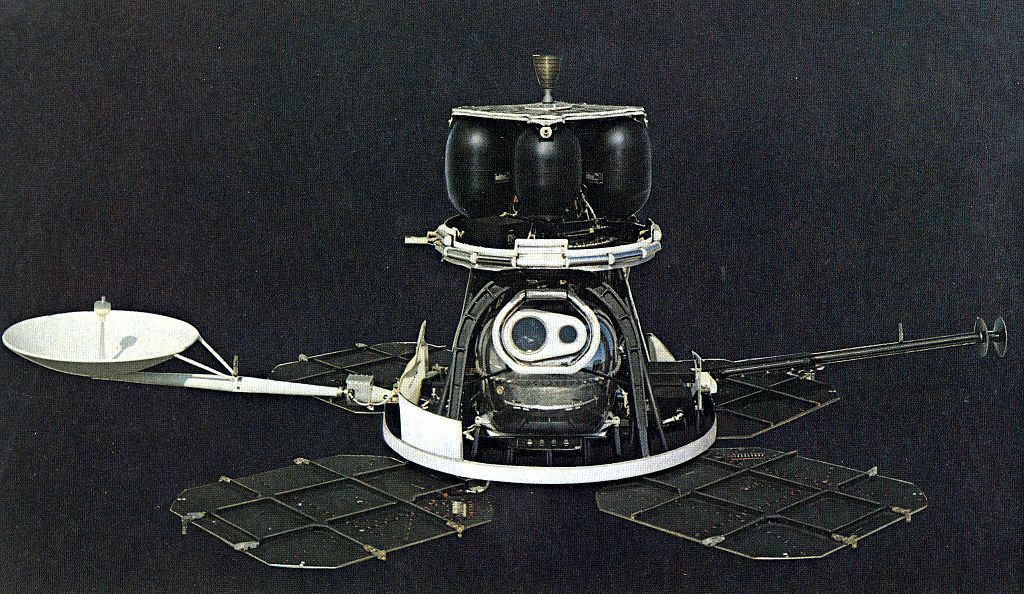Forty-five years ago today — August 10, 1966 — Lunar Orbiter 1 was launched atop an Atlas Agena rocket out of Cape Canaveral.

(Lunar Orbiter spacecraft. NASA image.)
Lunar Orbiter 1 was the first of five spacecraft that took photographs of predominantly smooth areas of the Moon so landing sites for Surveyor and Apollo missions could be selected. Mission controllers got the opportunity to deal with some real-time problems during the spacecraft’s flight to the Moon:
The spacecraft experienced a temporary failure of the Canopus star tracker (probably due to stray sunlight) and overheating during its cruise to the Moon. The star tracker problem was resolved by navigating using the Moon as a reference and the overheating was abated by orienting the spacecraft 36 degrees off-Sun to lower the temperature.
Although some of the first orbiter’s photographs were smeared, the mission was an overall success, including taking the first two images of the Earth from the vicinity of the moon.
And on this date 10 years ago, the Space Shuttle Discovery launched from the Kennedy Space Center on mission STS-105. Astronauts Scott J. Horowitz, Frederick “Rick” W. Sturckow, Daniel T. Barry, and Patrick G. Forrester transported 7,000 pounds of supplies and equipment to the International Space Station. They also ferried the ISS Expedition 3 crew — Frank L. Culbertson, Jr. (see below), Vladimir N. Dezhurov, and Mikhail Tyurin — to the station and returned the Expedition 2 crew — Yury V. Usachev, James S. Voss, and Susan J. Helms — to Earth.
Eight years after his return to earth, I sat next to Captain (USN, Retired) Culbertson at the NASA Industry-Education Forum in Washington, DC. He was a very nice fellow, despite having graduated from a rival high school down in Charleston.
Many years ago I gave up my dream of being an astronaut (I’d already worked Shuttle landings at Edwards AFB, but failed to be accepted as a Flight Test Engineer candidate), but it’s cool to have met and worked for some. Thankfully, I can still take imaginary voyages through my own and others’ fiction.








